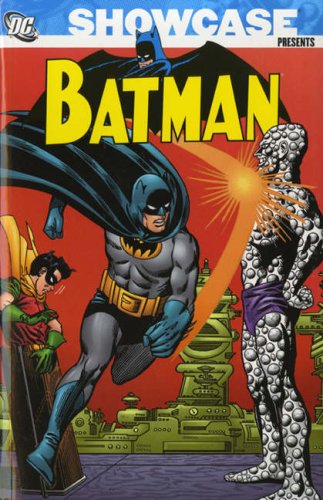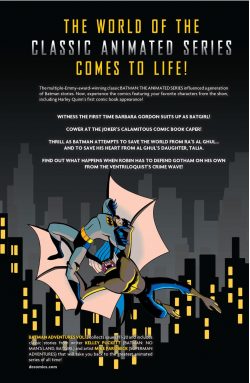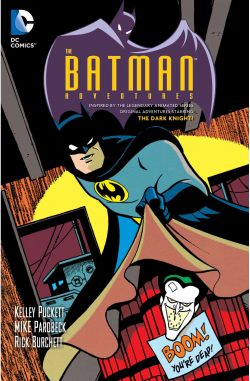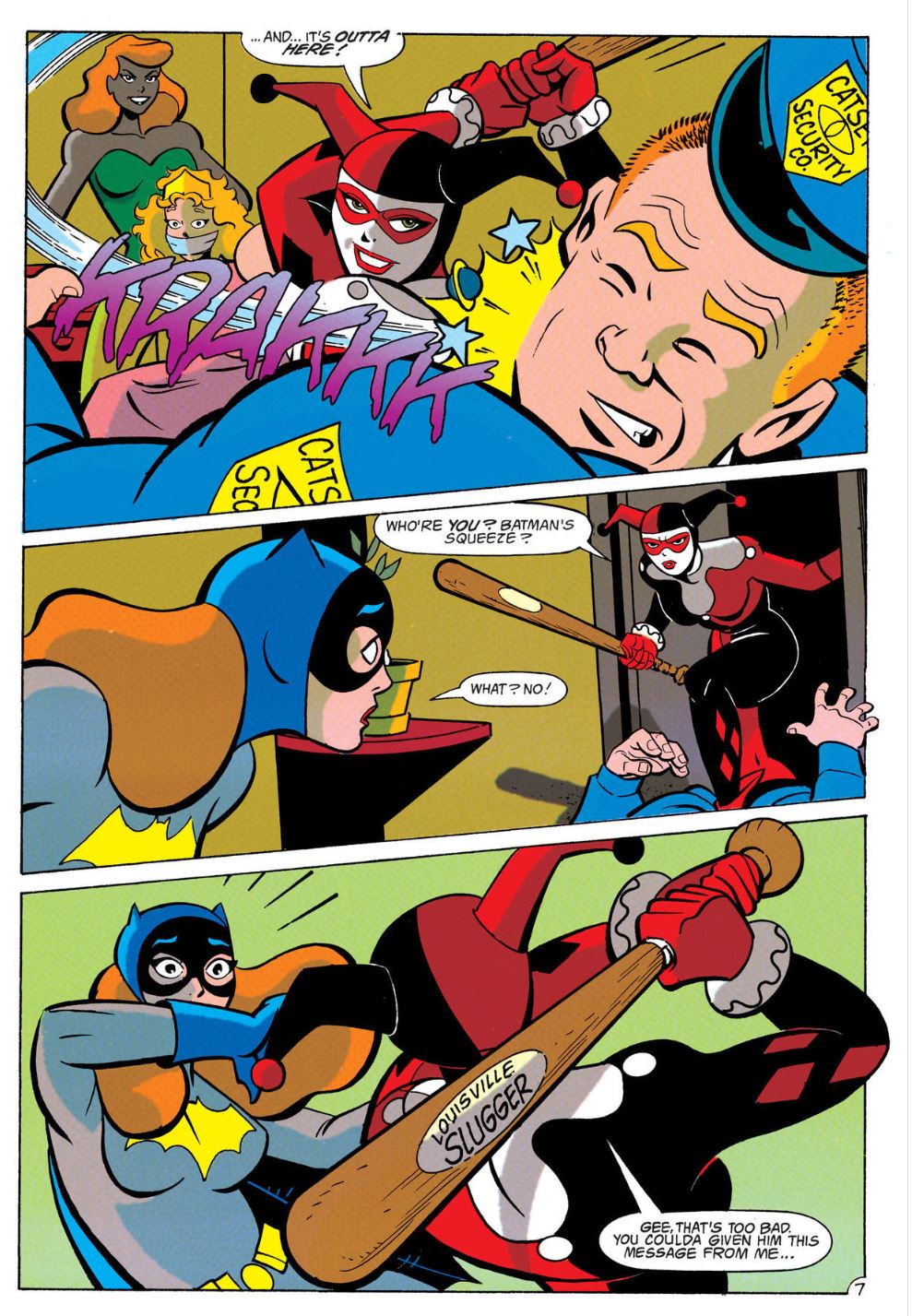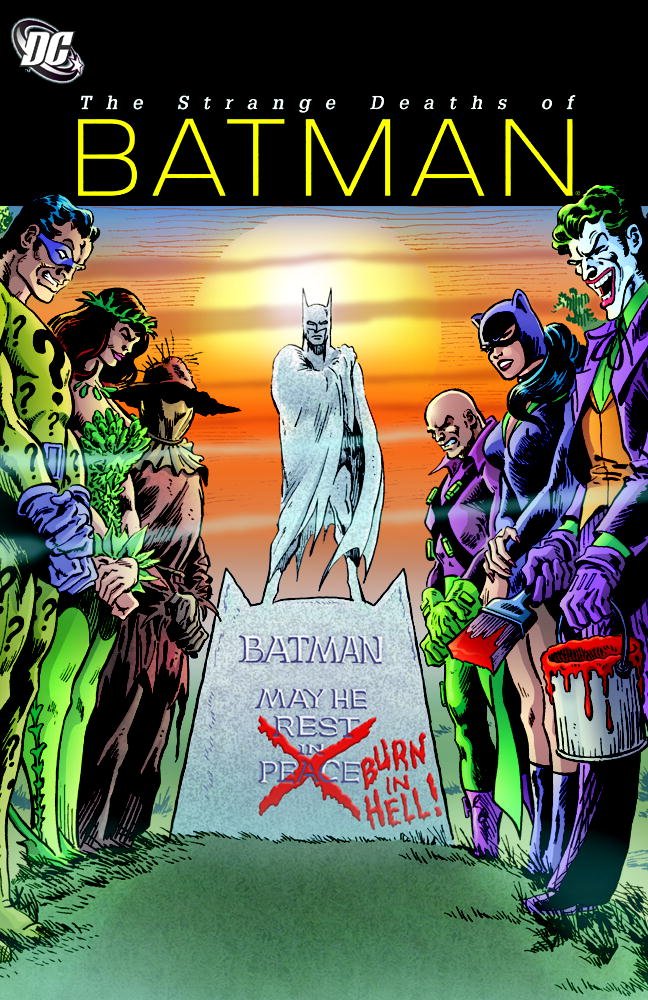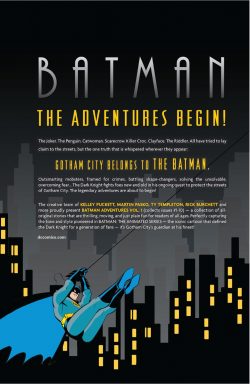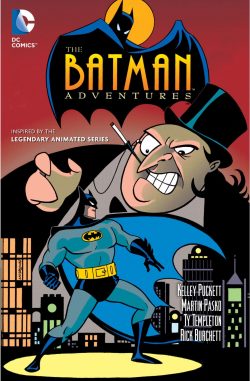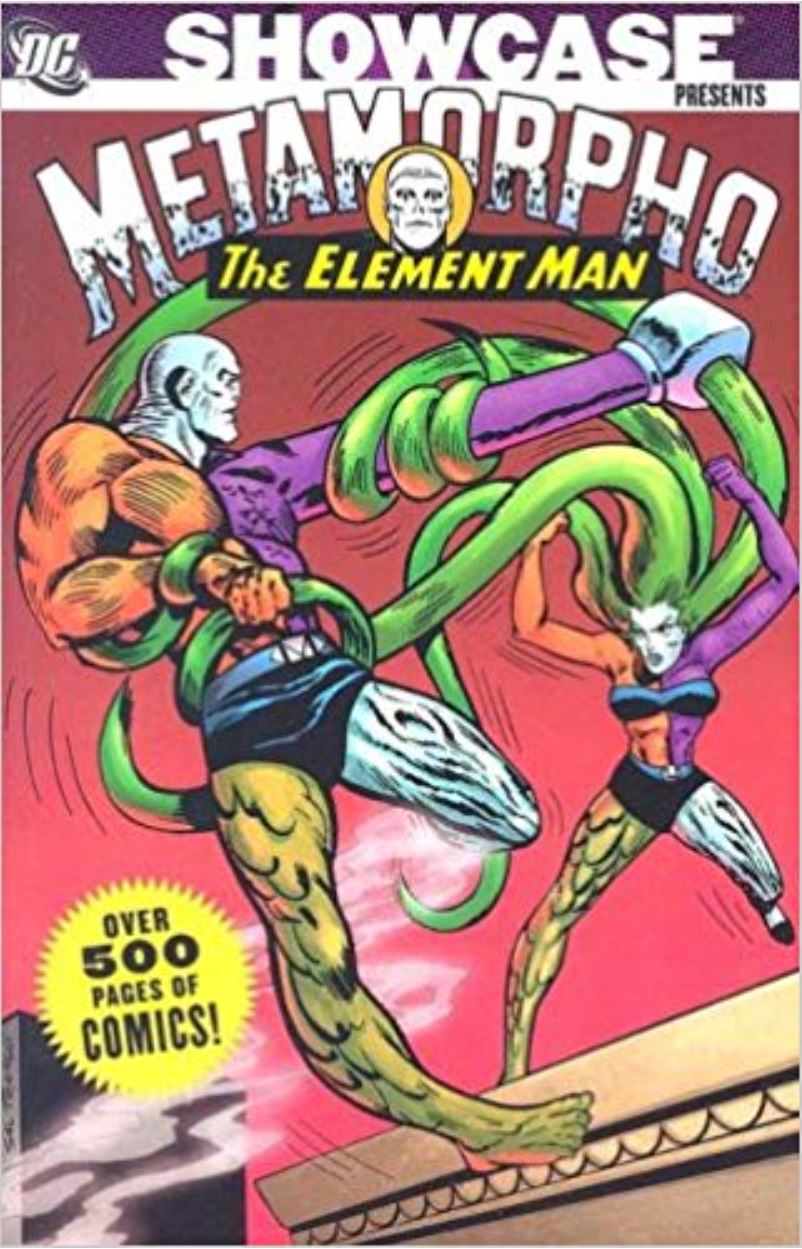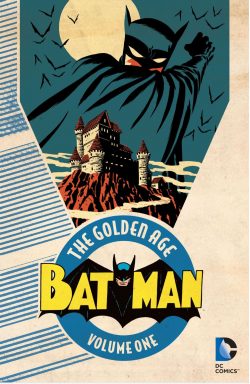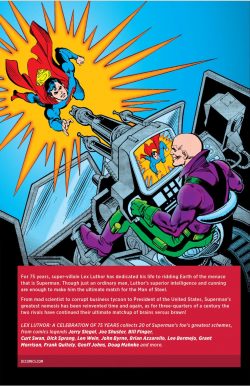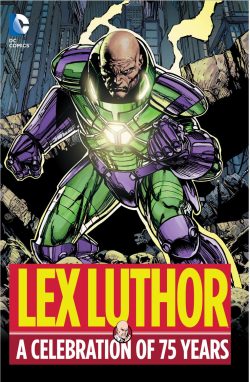
By Edmond Hamilton, Cary Bates, Jim Shooter, Leo Dorfman, Bill Finger, Curt Swan, George Klein, Sheldon Moldoff, Al Plastino & various (DC Comics)
ISBN: 978-1-84856-585-2 (TPB)
For decades Superman and Batman were quintessential superhero partners: the “World’s Finest” team. Friends as well as colleagues, their pairing made sound financial sense since DC’s top heroes could cross-pollinate and cross-sell their combined readerships. This third magnificent monochrome compendium gathers their cataclysmic collaborations from the glory days of the mid-1960’s: specifically World’s Finest Comics #146-173 – with the exception of reprint 80-Page Giant issues #161 &170 – and cumulatively covering cover-dates December 1964 through February 1968). This was a time when the entire Free World went superhero gaga in response to Batman’s live action and Superman’s animated TV shows…
A new era had begun in World’s Finest Comics #141 when author Edmond Hamilton and artists Curt Swan & George Klein (who illustrate the bulk of tales in this collection) ushered in a more dramatic, realistic and far less whimsical tone. That titanic creative trio continue their rationalist run in this volume starting with #146’s ‘Batman, Son of Krypton!’ wherein uncovered evidence from the Bottle City of Kandor and bizarre recovered memories seemed to indicate the Caped Crusader is in fact an amnesiac, de-powered, Kryptonian. Moreover, as our heroes dig deeper, Superman thinks he’s found the Earthman responsible for Krypton’s destruction and becomes crazed with a hunger for vengeance…
WFC #147’s saw the sidekicks step up in a stirring blend of science fiction thriller and crime caper, all masquerading as an engaging drama of youth-in-revolt when ‘The New Terrific Team!’ (February 1965 Hamilton, Swan & Klein) saw Jimmy Olsen and Robin quit their underappreciated assistant roles to strike out on their disgruntled own. Naturally there was a perfectly rational, if incredible, reason. In #148 ‘Superman and Batman – Outlaws!’ (with Sheldon Moldoff temporarily replacing Klein) saw the Cape & Cowl Crimebusters sent to another dimension where arch-villains Lex Luthor and Clayface were heroes and the Dark Knight and Action Ace ruthless hunted criminals, after which World’s Finest Comics #149 (May 1965 and also inked by Moldoff) dealt out ‘The Game of Secret Identities!’ with Superman locked into an increasingly obsessive battle of wits with Batman that seemed likely to break up the partnership and even lead to violent disaster…
‘The Super-Gamble with Doom!’ (#150) introduced manipulative aliens Rokk and Sorban, whose addictive and staggeringly spectacular wagering almost gets Batman killed and Earth destroyed, before ‘The Infinite Evolutions of Batman and Superman!’ in #151 introduces junior writer Cary Bates, pairing with Hamilton to produce a beguiling sci fi thriller as the Gotham Guardian transforms into a callous future-man and the Metropolis Marvel is reduced to a brutish Neanderthal…
Hamilton solo-scripted #152’s ‘The Colossal Kids!’ wherein a brace of incomprehensibly super-powered brats outmatch, outdo but never outwit Batman or Superman (and of course there are old antagonists behind the challenging campaign of humiliation) after which Bates rejoins his writing mentor for a taut and dramatic “Imaginary Story” in #153.
When Editor Mort Weisinger was expanding Superman continuity and building the legend, he knew that each new tale was an event adding to a nigh-sacred canon and that what was written and drawn mattered to readers. But as an ideas man he wasn’t going to let that aggregated “consensus history” stifle a good idea, nor would he allow his eager yet sophisticated audience to endure clichéd deus ex machina cop-outs to mar the sheer enjoyment of a captivating concept. The mantra known to every baby-boomer fan was “Not a Dream! Not a Hoax! Not a Robot!” boldly emblazoned covers depicting scenes that couldn’t possibly be true… even if it was only a comic book.
Imaginary Stories were conceived as a way of exploring non-continuity plots and scenarios devised at a time when editors believed entertainment trumped consistency and knew that every comic read was somebody’s first – or potentially last. Illustrated by as ever by Swan & Klein, ‘The Clash of Cape and Cowl!’ posited a situation where brilliant young Bruce Wayne grew up believing Superboy had murdered his father, thereafter dedicating his life to crushing all criminals as a Bat Man awaiting the day when he could expose Superman as a killer and sanctimonious fraud…
WFC #154’s ‘The Sons of Superman and Batman’ (by Hamilton) opened doors to a far less tragic Imaginary world: one where the crime fighters finally found time to marry Lois Lane and Kathy Kane and have kids. Unfortunately, their lads proved to be both a trial and initially a huge disappointment…
‘Exit Batman – Enter Nightman!’ is a canny psychological thriller with the World’s Finest Team on the cusp of their 1,000th successful shared case when a new costumed crusader threatens to break up the partnership and replace burned out Batman, after which ‘The Federation of Bizarro Idiots!’ in #156 sees well-meaning but imbecilic imperfect duplicates of Superman and Batman set up shop on Earth. They end up as pawns of the duplicitous Joker, and it does not end well…
In #157’s ‘The Abominable Brats’ – drawn with inevitable brilliance by Swan and inked by both Klein & Moldoff – featured an Imaginary Story sequel as the wayward sons of heroes return to cause even more mischief, although once more there are other insidious influences in play…
‘The Invulnerable Super-Enemy!’ (#158 by Hamilton, Swan & Klein), has the Olsen-Robin Team stumble upon three Bottled Cities and inadvertently draw their mentors into a terrifying odyssey of evil. At first it appears to be the work of Brainiac but is in fact far from it, and is followed by ‘The Cape and Cowl Crooks!’ (WFC #159), dealing with foes possessing far mightier powers than our heroes – apparently a major concern for readers of those times.
To this day whenever fans gather a cry soon echoes out, “Who’s the strongest/fastest/better dressed…?” but this canny conundrum took the theme to superbly suspenseful heights as Anti-Superman and Anti-Batman continually outwit and outmanoeuvre the heroes, seemingly possessed of impossible knowledge of their antagonists…
Leo Dorfman debuted as scripter in#160 as the heroes struggled to discredit ‘The Fatal Forecasts of Dr. Zodiac’, a scurrilous Swami who appears to control fate itself. World’s Finest Comics #161 was an 80-Page Giant reprinting past tales and not included in this collection, so we jump to #162’s ‘Pawns of the Jousting Master!’: by another fresh scripting face. Teenager Jim Shooter produced an engaging time travel romp wherein Superman and Batman are defeated in combat and compelled to travel back to Camelot in a beguiling tale of King Arthur, super-powered knights and invading aliens…
‘The Duel of the Super-Duo!’ (#163, by Shooter, Swan & Klein) pits Superman against a brainwashed Batman on a world where his mighty powers are negated and other heroes of the galaxy are imprisoned by a master manipulator, after which Dorfman delivers an engaging thriller wherein a girl who is more powerful than Superman and smarter than Batman proves to be ‘Brainiac’s Super Brain-Child!’ Bill Finger & Al Plastino step in to craft WFC #165’s ‘The Crown of Crime’ (March 1967), depicting the last days of dying mega-gangster King Wolff. His plan to go out with a bang sets the underworld ablaze and almost stymies both heroes, after which Shooter, Swan & Klein depict ‘The Danger of the Deadly Duo!’ in which the 20th generation of Batman and Superman unite to battle The Joker of 2967 and his uncanny ally Muto: a superb flight of fantasy that was sequel to a brief series of stories starring Superman’s heroic descendent in a fantastic far future world.
WFC #167 saw Bates solo script ‘The New Superman and Batman Team!’: an Imaginary Story wherein boy scientist Lex Luthor gives himself super-powers and a Kal-El who had landed on Earth without Kryptonian abilities trains himself to become an avenging Batman after his foster-father Jonathan Kent was murdered. The Smallville Stalwarts briefly united in a crime-fighting partnership, but destiny has other plans for the fore-doomed friends…
In World’s Finest #142 a lowly, embittered janitor suddenly gained all the powers of the Legion of Super-Heroes and attacked Caped Crusader and Action Ace out of frustration and jealousy. Revived by Bates for #168’s ‘The Return of the Composite Superman!’ he is actually the pawn of a truly evil villain but gloriously triumphs over his own venal nature, after which #169 hosts ‘The Supergirl-Batgirl Plot’: a whimsical fantasy feast from Bates, Swan & Klein wherein the uppity lasses apparently toil tirelessly to supplant and replace Batman and Superman before it’s revealed that the Dynamic Damsels are mere pawns of an extremely duplicitous team of female felons and a brace of old WF antagonists are actually behind the Byzantine scheme…
Issue #170 is another unincluded mammoth reprint edition, after which #171 reveals ‘The Executioner’s List!’ (script by Dorfman): an intriguing, tense murder-mystery with a mysterious sniper seemingly targeting friends of Superman and Batman, before stirring, hard-hitting Imaginary Story ‘Superman and Batman… Brothers!’ (#172, December 1967) posits a grim scenario wherein orphaned Bruce Wayne is adopted by the Kents, but cannot escape a destiny of tragedy and darkness. Written by Shooter and brilliantly interpreted by Swan & Klein, this moody thriller in many ways signalled the end of angst-free days and beginning of a darker, edgier and more cohesive DC universe for a less casual readership, thereby surrendering the mythology to an increasingly devout fan-based audience.
This stunning compendium closes with World’s Finest Comics #173 and ‘The Jekyll-Hyde Heroes!’ (Shooter, Swan & Klein) as a criminal scientist devises a way to literally transform the Cape & Cowl Crusaders into their own worst enemies…
These are gloriously clever yet uncomplicated tales whose timeless style has returned to inform if not dictate the form for much of DC’s modern television animation. The stories here are a veritable feast of witty, gritty thrillers packing as much punch and wonder now as they always have: unmissable adventure for fans of all ages!
© 1964-1968, 2010 DC Comics. All Rights Reserved.

